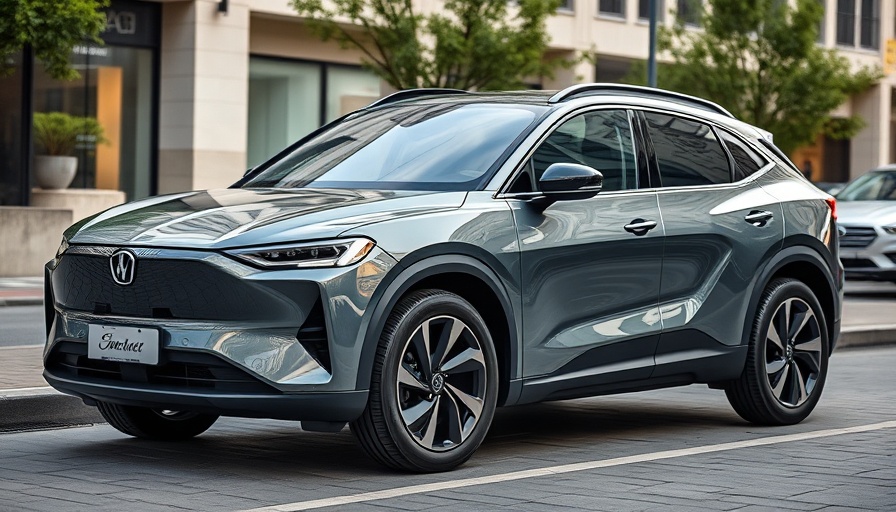
Decoding the EV Tax Credit System for 2024 & 2025
With the new federal Clean Vehicle Tax Credit updates rolling out, there's a decisive shift in the EV market landscape. Homeowners and eco-conscious buyers eager to capitalize on these changes must stay informed. The IRS has revised its lists of eligible electric and plug-in hybrid vehicles (PHEVs) for the 2024 and 2025 tax credit, influenced by the Inflation Reduction Act's provisions on battery sourcing and manufacturing requirements.
This revamp means fewer vehicles will qualify for the coveted $7,500 credit. The newly introduced stipulations require that a considerable portion of vehicle production and battery components occurs in North America. This aim to push manufacturers to ramp up domestic operations is reflected in the announcements from several automakers planning expansions in U.S. battery and EV manufacturing capacity.
What Has Changed in EV Eligibility?
Notably, some previously eligible vehicles like the Hyundai and Kia models have fallen off the list due to the 'built in North America' requirement. This is a significant shift, especially for consumers who previously had a wider range of choices. Cars above MSRP caps—$55,000 for sedans and $80,000 for SUVs and trucks—will also be ineligible, which particularly impacts high-end consumers.
Income Limits: Who Can Benefit?
The IRS has now set maximum income thresholds that determine who can claim these credits. They are $300,000 for married filers, $225,000 for heads of households, and $150,000 for individual taxpayers. This is a move aimed at ensuring that the tax credit primarily benefits middle-income buyers, helping them to embrace sustainable vehicle options.
The Collapse of Affordable Models: A Case Study
The Chevy Bolt and its EUV version, which occupied spots among the most affordable electric vehicles, will be temporarily sidelined following their production pause. However, they aren't gone forever; a new generation is expected with enhanced technology in 2025. Meanwhile, models like the Chevy Blazer and the Silverado remain eligible for credits, fulfilling the high-demand market space left by the Bolt.
Understanding the New Sourcing Requirements
If you're considering purchasing an EV, you'll want to familiarize yourself with how these new sourcing requirements work. By 2024, vehicles must feature 60% battery components manufactured in North America to qualify for the full credit, with this percentage climbing to 100% by 2032. This gradual ramping up is pivotal for ensuring sustainability and economic growth.
Claiming Your EV Tax Credit: How to Navigate the System
Thinking of leveraging the EV tax credit? You can choose between claiming it on your return or transferring the credit directly at the dealer to reduce the immediate cost. To make a claim, you must file IRS Form 8936, whether in your return or through a dealer. It's imperative that you have the seller provide a detailed report that includes vital information like sales price and vehicle identification.
State and Local Incentives: Layering Benefits
It’s also prudent to evaluate additional state-level incentives like California’s Clean Air Vehicles program, which offers perks beyond the federal tax credit. However, be cautious about restrictions—most states regulate how many incentives you can claim concurrently.
The Market at a Crossroads: Future of EV Legislation
The ongoing legislative changes in the EV landscape are not just about incentives; they set the stage for a transformative shift in consumer behavior toward electric vehicles. The accessibility and affordability that these credits can provide could ultimately redefine our transportation choices for a new generation of eco-friendly drivers.
As we navigate these industry changes, keeping informed and proactive can ensure that you make the right financial decisions. With a newfound understanding of eligibility criteria and market trends, homeowners and environmentally conscious users can confidently embark on their journey towards sustainable transportation. Always consider consulting a financial advisor or tax professional to determine how these changes impact your specific financial situation.
Take Action for Sustainable Driving Solutions!
Ready to dive into the world of electric vehicles and find the best financial opportunities available? Stay updated on eligibility, pricing caps, and new models coming to market. Your next vehicle purchase could significantly lower your carbon footprint and lead to substantial savings!
 Add Row
Add Row  Add
Add 



 Add Row
Add Row  Add
Add 
Write A Comment